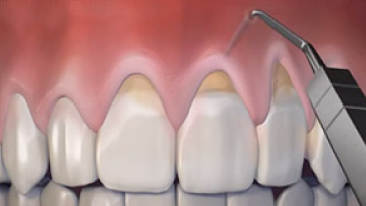
Periodontists often treat more problematic periodontal cases, such as those with severe gum disease or a complex medical history. Periodontists offer a wide range of treatments, such as scaling and root planning (in which the infected surface of the root is cleaned) or root surface debridement (in which damaged tissue is removed). They can also treat patients with severe gum problems using a range of surgical procedures. In addition, periodontists are specially trained in the placement, maintenance, and repair of dental implants.
During the first visit, the periodontist usually reviews the patient’s complete medical and dental histories. It is extremely important for the periodontist to know if any medications are being taken or if the patient is being treated for any condition that can affect periodontal care, such as heart disease, diabetes, or pregnancy.
The periodontist examines the gums, checks to see if there is any gum line recession, assesses how the teeth fit together when biting, and checks the teeth to see if any are loose. The periodontist will also take a small measuring instrument called a probe and places it between the teeth and gums to determine the depth of those spaces, known as periodontal pockets; this helps the periodontist assess the health of the gums. X-rays may also be taken to observe the health of the bone below the gum line.


Some patients’ periodontal needs can be managed by the general dentist. However, as more and more patients are exhibiting signs of periodontal disease, A research suggests a relationship between periodontal disease and other chronic diseases of aging, periodontal treatment may necessitate a greater understanding and increase the level of expertise by a trained specialist. Patients with moderate or severe levels of periodontal disease, or patients with more complex cases, will be best managed by a partnership between the dentist and periodontist.